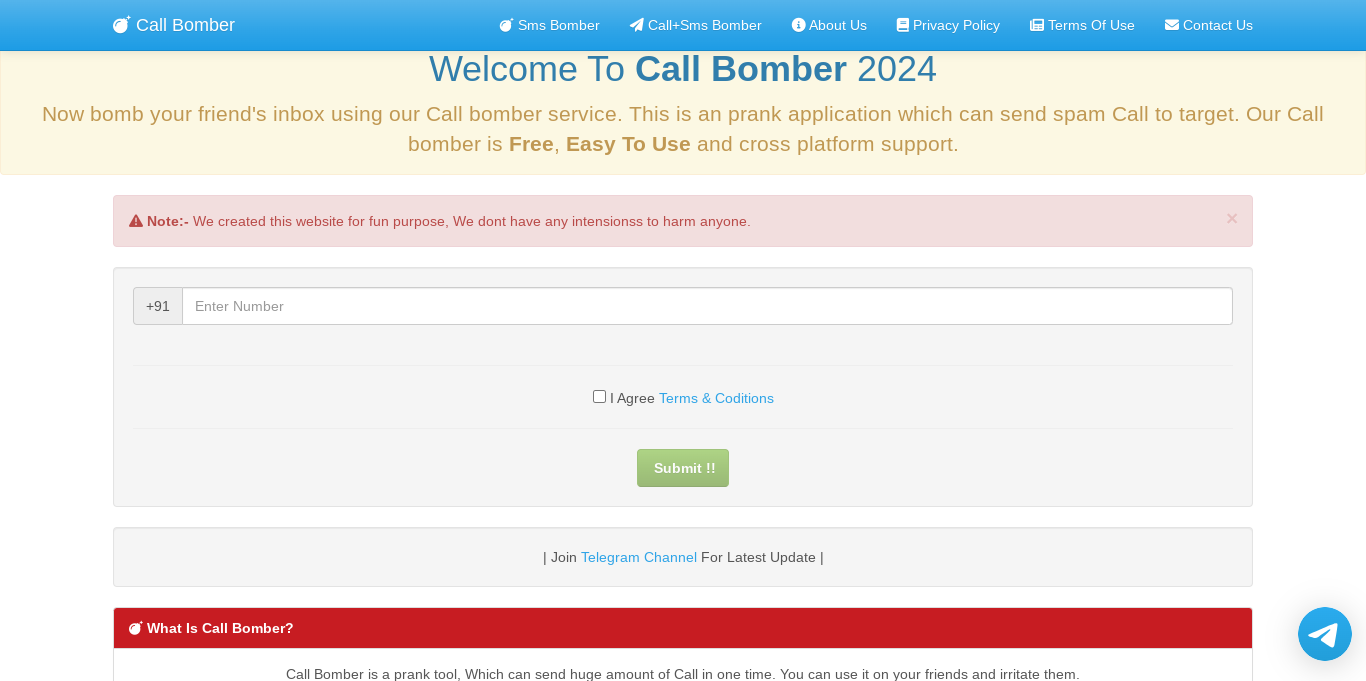Fake Call Bomber – The Rise of Threats to Privacy and Security
In Short
- Fake Call Bomber uses auto-dialers to flood numbers with calls, evolving from pranks to privacy threats.
- Spoofing hides attacker identity, while advanced features increase disruption.
- It enables fraud, data theft, and harassment – harming individuals and businesses.
- Caution is needed with unsolicited calls—screening and blocking help.
- Global collaboration and regulations must address cross-border perpetrators.
- Call bombing technology requires ethical oversight to prevent the normalisation of exploitation.
Fake Call Bomber is bombarding a phone number with excessive calls using auto-dialling software. While call bombing started as a harmless prank played on friends, it has evolved into a dangerous threat to privacy, security, businesses and vulnerable populations. This essay will examine how call bombing has transformed from innocent practical jokes to a severe hazard enabled by advancing technology, discuss the sophisticated features of modern call bombing tools, provide recommendations for protection at both individual and institutional levels, analyse the ethical implications, and argue for a measured regulatory and technological response.
The Transformation of Fake Call Bomber from Prank to Threat
In its early days, call bombing was utilised mainly as a prank by teenagers and college students to annoy their peers jokingly. Using simple auto-dialling scripts, call bombing allowed mischief-makers to flood their friends’ landlines with repeated calls as a stunt. While disruptive, such amateur call bombing was relatively harmless and commonly viewed as mere youthful misbehaviour.
However, with the proliferation of smartphones and innovations in call bombing software, this tactic has become an easy and potent vehicle for harassment, threats, fraud and other criminal exploitation by malicious actors. Contemporary Fake Call Bombers can overwhelm individual cell phones and enterprise phone systems with hundreds of calls per hour using sophisticated auto-dialling algorithms. Moreover, they often employ caller ID spoofing to mask the true originating number, making it extremely difficult for victims to identify and stop unwanted calls. These unwanted repeated calls can severely disrupt vital business and emergency response communications. By targeting the phone systems of companies, hospitals and organisations, attackers can create chaos, steal sensitive data, cause major operational disruptions, or systematically harass individuals. Fake Call Bomber also frequently impersonate well-known businesses to deceive victims into revealing personal information that enables identity theft or can be used for targeted social engineering attacks.
Additionally, call bombing has become a favoured tool for intimidation tactics, as con artists abuse people’s fears and lack of technical literacy to threaten and coerce them into providing funds or bank account access. The nonstop bombardment of stress-inducing calls also represents a significant invasion of privacy and psychological safety, creating immense emotional distress for victims. In summary, the evolution of call bombing software from DIY scripts into sophisticated weapons has transformed this once-innocent pastime into a dangerous threat to individuals, businesses, emergency services and society as a whole. What began as youthful mischief now enables criminality, deception and harm.
Key Features of Call Bombing Tools
Contemporary call bombing systems possess certain key features that make them particularly hazardous threats compared to early iterations:
- Caller ID masking or spoofing enables attackers to disguise or falsify the calling number displayed to recipients, preventing easy tracing back to the true source. This makes identifying and stopping repeat attackers exceedingly tricky.
- Instead of repeated silent calls, pre-recorded verbal messages amplify disruption, enable personalised social engineering, and increase the emotional toll on victims.
- Powerful auto-dialling algorithms can rapidly flood target phone lines with hundreds of calls per hour, achieving denial-of-service at scale.
- Call forwarding and routing features obscure the origination point by constantly shifting calls through multiple intermediary numbers before they reach the victim.
- Voice-changing technology facilitates the impersonation of banks, tech support services, government agencies, etc, to extract sensitive personal data from targets.
- These capabilities demonstrate how call bombing techniques have progressed from being just a primary annoyance to highly sophisticated threats that can enable serious privacy violations, fraud, data theft, harassment, and more.
Recommendations for Protection
While call bombing poses novel challenges that make it difficult to combat in its entirety, certain precautions can help individuals and organisations guard against such threats:
- Individuals should exercise extreme caution with unsolicited calls, avoid providing personal or financial information to unknown callers, and use call screening and blocking tools offered by device and carrier providers. Adding personal numbers to the National Do Not Call Registry can help minimise telemarketing calls.
- Organisations should establish robust protocols for employees concerning handling suspicious calls, including mandatory identity confirmation of alleged vendors or partners, and provide training to identify common social engineering tactics. They can employ AI-enabled call filtering platforms to build databases of known scam caller numbers, and auto-block future calls from those sources.
- Law enforcement faces significant challenges due to cross-border cyber-enabled perpetrators. However, coordinated efforts between national and international agencies can enable collaboration to track and prosecute criminal groups. They should also support further advancement of anti-spoofing technologies.
- Policymakers should advocate and enact regulations that impose more robust authenticity requirements for caller ID information to reduce ID spoofing. Telecommunications providers also must accelerate the implementation of robust caller authentication frameworks.
Above all, greater public awareness education about the evolution of call bombing and common scam tactics can empower citizens to make safer decisions and guard themselves against such prevalent threats.
Ethical Implications
The practice of call bombing reflects profoundly unethical behaviour in violation of core human values like compassion, dignity and mutual respect. The nonconsensual flooding of an individual’s phone line with stress-inducing repetitive calls is an inherently exploitative act that should be condemned as morally unacceptable. A society that permits such behaviour risks normalising and trivialising broader patterns of abuse, intimidation and boundary-violating conduct.
Technology companies are responsible for considering the moral hazards of innovations that can quickly enable harassment, impersonation, threats, fraud and other criminality at scale if misused. We must work to cultivate an ethical digital culture that allows for the benefits of communication technologies but curtails foreseeable harms before they increase. This requires aligning social norms, commercial interests and governance with moral values that uplift our humanity. Call bombing and related tactics renounce those values and should spur us to build a society centred on compassion, autonomy and mutual humanisation.
Conclusion
In conclusion, the rapid evolution of call bombing from a playful prank to a dangerous privacy and security threat demonstrates the need for caution, education and measured governance to address risks arising from advancing technology. As innovations continuously reshape and expand the nature of risks, policymakers, technology companies, and the public must respond with coordinated foresight, ethical codes of conduct, and balanced regulatory and technical solutions to protect individuals and society while supporting beneficial innovations. With care, vigilance and cooperation, we can work to ensure emerging capabilities like call bombing amplify human potential rather than undermine it. But this requires recognising our shared duty to progress towards a just, compassionate and liberating digital future.
Frequently Asked Questions
What is a Fake Call Bomber?
Fake Call Bomber uses automated software to repeatedly phone a number, disrupting, invading privacy, and posing security risks. These technologies have grown from pranks to digital threats.
How do Fake Call Bomber work?
Fake Call Bomber utilise auto-dialers to make several calls to a particular number. Caller ID spoofing makes them hard to track and ban. Fake Call Bomber 2.0 adds spoofing, voice change, auto-dialling, recording, and flooding.
What are called bombing risks?
Call bombing can interrupt communication, impersonate firms for personal benefit, intimidate people into committing financial fraud, invade privacy, cause emotional anguish, and harass. Caller ID spoofing can make it hard for victims to find and prevent fake call bombers.


















